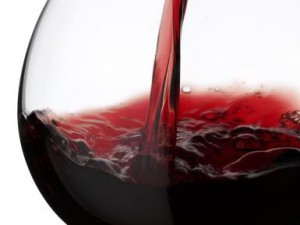 In case you missed it on the evening news or your FB feed, last week a class action suit was filed against the producers of inexpensive wines claiming they were dangerously high in arsenic. The initial comments on my FB newsfeed all went the way you would expect, “glad I don’t drink those wines” to my favorite, “arsenic is the last thing you have to worry about killing you in Two-Buck Chuck”. The fact is arsenic levels exist in all wine just like it does in all the fruits and vegetables grown in California or anywhere else for that matter. Before everyone goes into a panic it is time to examine the only fact(s) we know about this case.
In case you missed it on the evening news or your FB feed, last week a class action suit was filed against the producers of inexpensive wines claiming they were dangerously high in arsenic. The initial comments on my FB newsfeed all went the way you would expect, “glad I don’t drink those wines” to my favorite, “arsenic is the last thing you have to worry about killing you in Two-Buck Chuck”. The fact is arsenic levels exist in all wine just like it does in all the fruits and vegetables grown in California or anywhere else for that matter. Before everyone goes into a panic it is time to examine the only fact(s) we know about this case.
1. The person who filed the suit, Kevin Hicks, owns the lab, BeverageGrades, that has “discovered” this conspiracy against the wine drinking public. While he is positioning himself as the consumer advocate he is simultaneously marketing his lab services to wineries as well. Nearly all wineries use labs to check levels of all sorts of things that relate to the quality of the finished product. Do they even check for arsenic? I doubt it. Why check for something that no government agency requires to know and does not affect the quality of the wine. To me this smacks a little of extortion or at the very least it is self-serving.
2. The government has never set levels of acceptable arsenic in wine, or any food product for that matter, only drinking water. Why? Because the levels exist in all foods but at such minuscule amounts that it would likely never be a problem. The levels set by the EPA for drinking water are 10 parts per billion (ppb). It is worth noting that the acceptable level is an arbitrary number. Canada sets their limit at 100 ppb and Japan at 1000 ppb, which are 10x and 100x the US levels. Most community water systems lie between .1 and 1 ppb. Mr. Hicks claims levels in some cheap wines run as high as 50 ppb. The recommended amount of water to consume is 64 ounces per day, or eight 8 oz. glasses. The recommended amount of wine to drink is 5-10 oz. per day. In order for you to consume a dangerous amount of arsenic (which again is a questionable level) you would need to drink 3 liters of wine per day, the equivalent of 4 bottles. The take away of this is that if you are afraid you should move to Japan where you could then drink 300 liters per day and still not consume a dangerous level of arsenic according to their government.
3. BeverageGrades figures have not been independently verified. Since no one is concerned about the level of arsenic in wine there is no long term study to substantiate his claim. Hicks claims to have tested 1300 wines but has not published this data nor offered for another independent lab to examine his methodology. His attorney claims they have had another lab verify their results but has not produced any evidence. Since the story broke a couple of labs have run their own small studies and have not found levels as high as BeverageGrades, with levels mostly 1 to 3 ppb.
The only fact that is credible in this consumer scare is that there is arsenic in wine, just like virtually every vegetable, fruit, grain and meat you consume as well. Did you give up rice because of that arsenic scare last year? Do you still eat tuna even when it has been shown to contain dangerous levels of mercury? Most studies are mixed about the potential threat of these substances, claiming that you may die of cancer due to lifelong exposure. The truth is we will all die of something. I am far more concerned about being hit by a train while crossing the railroad tracks to get to my car after a long day of wine tasting.
